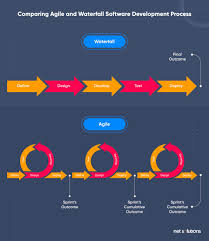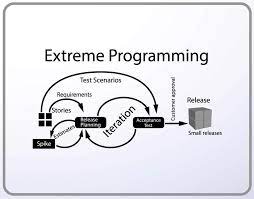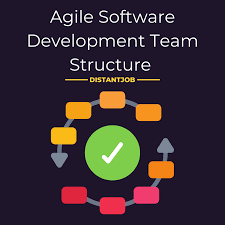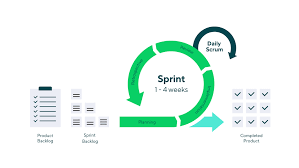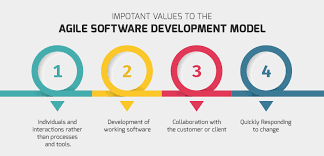Optimizing Workflow: The Impact of Kanban in Software Development
The Power of Kanban in Software Development
Kanban, a popular agile methodology, has revolutionized the way software development teams manage their projects. Originating from the Japanese manufacturing industry, Kanban has been adapted and embraced by software development teams worldwide for its simplicity and effectiveness.
What is Kanban?
Kanban is a visual project management tool that helps teams track and manage their work efficiently. The core principle of Kanban is to visualize work in progress (WIP) on a Kanban board, which typically consists of columns representing different stages of the workflow.
Key Concepts of Kanban
- Visualizing Workflow: By visualizing tasks on a Kanban board, team members can easily see the status of each task and identify bottlenecks or blockers.
- Limiting Work in Progress: Kanban encourages limiting the number of tasks in progress at any given time to improve focus and efficiency.
- Continuous Delivery: Teams using Kanban strive for continuous delivery by completing and releasing tasks as soon as they are ready.
- Continuous Improvement: Through regular retrospectives, teams reflect on their processes and make incremental improvements to enhance productivity.
The Benefits of Kanban in Software Development
Kanban offers several benefits to software development teams, including:
- Improved Visibility: Team members have a clear view of the project status and can easily identify areas that need attention.
- Increased Efficiency: By limiting WIP, teams can focus on completing tasks before moving on to new ones, leading to faster delivery times.
- Better Collaboration: Kanban promotes collaboration among team members by fostering transparency and communication.
- Flexibility: Teams can adapt to changing requirements or priorities quickly without disrupting the workflow.
In conclusion, Kanban is a powerful methodology that empowers software development teams to streamline their processes, improve efficiency, and deliver high-quality products consistently. By embracing the principles of Kanban, teams can achieve greater agility and success in today’s fast-paced development environment.
Understanding Kanban in Software Development: Key FAQs and Comparisons
- What is Kanban in software development?
- Is Jira a Kanban?
- Is Kanban good for software development?
- Is Kanban a agile tool?
- What is scrum vs Kanban?
- Is Kanban better than agile?
- Is Kanban a SDLC?
What is Kanban in software development?
Kanban in software development is a visual project management methodology that focuses on optimizing workflow efficiency and enhancing team collaboration. By visualizing tasks on a Kanban board and limiting work in progress, teams can easily track the status of each task, identify bottlenecks, and prioritize work effectively. Kanban promotes continuous delivery by completing tasks as soon as they are ready, leading to faster project completion times. This approach fosters transparency, flexibility, and continuous improvement within software development teams, ultimately resulting in enhanced productivity and successful project outcomes.
Is Jira a Kanban?
When it comes to Kanban software development, a common question that arises is whether Jira is a Kanban tool. Jira, a popular project management tool developed by Atlassian, offers Kanban boards as one of its features. While Jira itself is not inherently a Kanban methodology, it provides users with the flexibility to implement Kanban boards within its platform. This allows teams to visualize their workflow, track tasks, and manage projects using Kanban principles effectively. Therefore, while Jira is not exclusively a Kanban tool, it can be utilized as a powerful tool for implementing and practicing Kanban in software development projects.
Is Kanban good for software development?
When considering whether Kanban is suitable for software development, it’s important to recognize that Kanban’s principles and practices can significantly benefit software development teams. Kanban’s visual nature allows teams to track work progress, identify bottlenecks, and maintain a steady workflow. By limiting work in progress and focusing on continuous delivery, Kanban helps teams improve efficiency and productivity. Additionally, its emphasis on continuous improvement through regular retrospectives enables teams to adapt and optimize their processes over time. In essence, Kanban can be a valuable tool for software development by enhancing visibility, collaboration, and flexibility within the team.
Is Kanban a agile tool?
In the realm of software development, the question often arises: Is Kanban an agile tool? The answer is yes. Kanban is indeed considered an agile methodology that emphasizes flexibility, continuous improvement, and efficiency in managing workflows. While Kanban may have its unique approach compared to other agile frameworks like Scrum, its core principles align with the values and principles of the Agile Manifesto. By promoting visualizing work, limiting work in progress, and fostering continuous delivery and improvement, Kanban embodies the essence of agility in software development processes.
What is scrum vs Kanban?
When comparing Scrum and Kanban in software development, it’s essential to understand the key differences between the two methodologies. While both are agile approaches that aim to improve team efficiency and productivity, they have distinct characteristics. Scrum is based on fixed-length iterations (sprints) with predefined roles and ceremonies, while Kanban focuses on continuous delivery with no predefined timeframes and emphasizes visualizing workflow and limiting work in progress. Each methodology has its strengths and is suitable for different project requirements and team dynamics, making it crucial for teams to evaluate their needs carefully before choosing between Scrum and Kanban for their software development processes.
Is Kanban better than agile?
When comparing Kanban to Agile, it’s important to understand that Kanban is actually a framework within the broader Agile methodology. While both Kanban and Agile share common principles such as iterative development and continuous improvement, they serve different purposes. Kanban focuses on visualizing and optimizing workflow by limiting work in progress and promoting continuous delivery. On the other hand, Agile encompasses various methodologies like Scrum, XP, and Lean, each with its own set of practices. Therefore, it’s not a matter of Kanban being better than Agile but rather choosing the methodology that best suits the specific needs and goals of a software development team.
Is Kanban a SDLC?
In the context of software development, Kanban is not a Software Development Life Cycle (SDLC) methodology itself, but rather a project management framework that can be applied within various SDLC methodologies. While SDLC defines the overall process for developing software from initiation to deployment, Kanban focuses on visualizing and optimizing the flow of work within that process. Teams often integrate Kanban into their chosen SDLC methodology, such as Agile or Waterfall, to enhance efficiency, collaboration, and delivery speed by leveraging Kanban’s principles of visualizing workflow and limiting work in progress.




